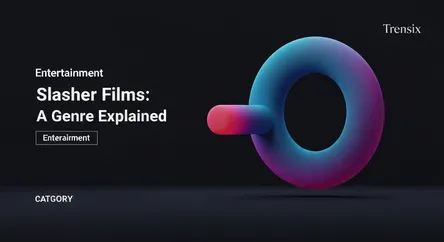Entertainment
Slasher Films: A Genre Explained

Explore the slasher film subgenre. Uncover its iconic tropes, from the masked killer to the final girl, and why it remains a horror movie staple.
What is it?
A slasher film is a subgenre of horror movies involving a killer who stalks and murders a group of people, usually one by one. The killer is often a masked, mysterious figure with a tragic or unknown backstory, and their weapon of choice is typically a bladed tool like a knife or machete. Key tropes include a group of young, often promiscuous, victims who are isolated from help, and the 'final girl'—a resourceful female protagonist who confronts and survives the killer. Seminal examples that defined the genre include John Carpenter's Halloween (1978), Friday the 13th (1980), and Wes Craven's meta-commentary Scream (1996).
Why is it trending?
Slasher films are experiencing a modern renaissance due to a mix of nostalgia and clever reinvention. Recent reboots and sequels to classic franchises like Halloween and Scream have been major box office successes, introducing iconic villains like Michael Myers and Ghostface to a new generation. Furthermore, original films like Ti West's X and Pearl have deconstructed and elevated the genre with unique aesthetics and deeper psychological themes. This blend of familiar formulas with fresh perspectives keeps audiences engaged and ensures the subgenre's continued relevance in pop culture.
How does it affect people?
Slasher films provide audiences with a cathartic, adrenaline-fueled experience in a controlled environment. They play on primal fears of stalking and sudden violence, creating intense suspense and jump scares. The genre's formulaic nature can also be comforting, as viewers anticipate certain events and character archetypes. Beyond the thrills, slashers have a significant cultural impact, popularizing tropes like the 'final girl' which has become a symbol of female resilience and survival. These films allow viewers to safely confront mortality and evil, leaving a lasting impression long after the credits roll.